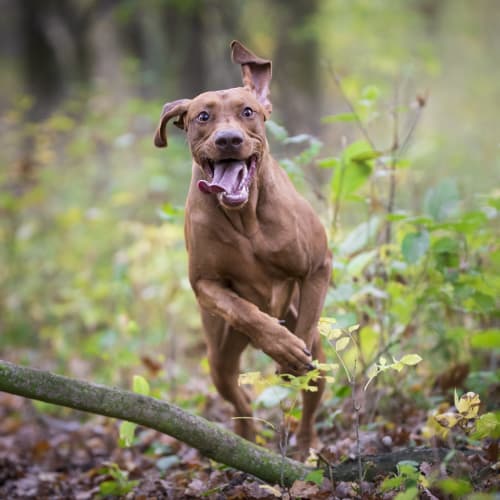What is the ACL, CCL or Cruciate?
In humans, the anterior cruciate ligament (ACL) is a thin connective tissue in the middle of our knees that connects our shin and thigh bones. In dog's this connective tissue is called the cranial cruciate ligament (CCL) and it connects the dog's tibia (bone below the knee) to their femur (bone above the knee).
Your dog's CCL is always load bearing because the dog's knee is always bent when standing. Although the human's ACL and the dog's CCL are different, we often refer to a dog's CCL as their cruciate or ACL interchangeably.

Differences Between ACL & CCL Injuries
The primary difference between ACL injuries in humans and CCL injuries in dogs is that in dogs the symptoms come on gradually and become worse with activity, whereas with humans an ACL injury tends to happen suddenly while sprinting or jumping.
Signs of a Torn ACL in Dogs
Typical signs of an injured or torn CCL in dogs are:
- Stiffness - noticeable after rest, following exercise
- Difficulty rising and jumping
- Hind leg lameness and limping
- Swelling around the affected knee
Continued activity on a mildly injured CCL will likely cause the symptoms to become more pronounced and the injury to become more severe.
Dogs suffering from a single torn CCL generally begin to favor the non-injured leg during activity, and often wind up injuring the second leg also. It is estimated that 60% of dogs with a single CCL injury will go on to injure the other knee within relatively short period of time.
Treating ACL Injuries in Dogs
If your dog has been diagnosed with a CCL injury or a torn ACL, there are a number of treatment options available. To determine the best treatment for your dog, your vet will take into consideration the severity of the injury, your dog's age, size, and weight, as well as your dog's lifestyle and energy level.
Treatment Options for ACL Injuries in Dogs
- Knee Brace - Treating a CCL injury with a knee brace is a non-surgical option that can help to stabilize the knee joint, and give the ligament time to repair itself. Treating CCL injuries through the use a knee brace may be successful in some dogs when combined with restricted activity.
- Extracapsular Repair Lateral Suture (ELSS/ECLS) - This surgery involves supplementing the torn ligament with a suture which temporarily does the job of the ligament so that it has time to heal, and the muscles around the knee can regain strength. This ACL surgery is most often recommended for small to medium sized dogs weighing less than 50lbs.
- Tibial Plateau Leveling Osteotomy (TPLO) - With this surgical technique, the need for the CCL ligament is eliminated by cutting and flattening the tibial plateau, then stabilizing the knee in the new position with a metal plate and screws.
Recovery from ACL Surgery
Not all dogs will recover at the same speed, and recovery from a torn ACL takes time. To ensure the best possible outcome from your dog's treatment, it is essential to follow your vet's instructions closely and never force your dog to do exercises. Expect your dog to require 16 weeks or more to recover from an ACL injury and return to normal activities.
